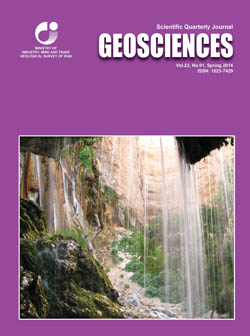Document Type : Original Research Paper
Authors
1 Assistant Professor, Department of Geology, Faculty of Basic Sciences, Isalmic Azad University, Islamshahr Branch, Tehran, Iran
2 M.Sc., Department of Geology, Faculty of Basic Sciences, Isalmic Azad University, Islamshahr Branch, Tehran, Iran
Abstract
The study area includes a part of the northern strip of Persian Gulf coast, a distance of approximately 650 kilometers. The Persian Gulf is a marginal, semi-closed, and shallow sea with salty and warm water. It has a circular flow in a clockwise direction along the coast of Iran, caused by the high range of evaporation. The ecology characteristics of The Persian Gulf have created special microfauna among which the hyaline foraminifera were studied in this research. In addition to sampling of coastal sediments, physicochemical properties of water were measured. It was determined that the physicochemical factor affecting the development, abundance, and diversity of foraminifera is dissolved oxygen. In general, 29 genera and 35 species of foraminifera were identified among them the most common foraminifera contain calcareous hyaline shell. The ratio of biocenosis to taphocenosis has a direct relationship with the amount of environmental pollutants. However, as the pollution rate is increased, the quantity and diversity of biocenosis species is decreased and the taphocenosis is upgraded. Another important factor in the abundance of foraminifera is the bed sedimentological characteristics, as the frequency of biocenosis and taphocenosis is higher within the fine-grained beds, whereas, in the low or absence of pollution, the abundance of protoplasm-containing shells within the silty-muddy beds is much higher than the other areas.
Keywords

